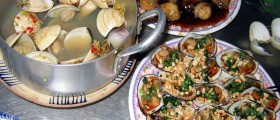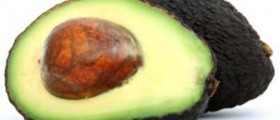Yellow mustard is a very popular condiment used all over the world in different meals, and in the United States it is used mainly in hamburgers, hot dogs, and chicken sandwiches. Not many people know that this condiment has many health benefits and great nutritional value.
Nutrition Facts
One teaspoon of yellow mustard seeds, which are used to make a sauce of the same name, contains 15 calories, 1.1 grams of fiber, and 0.9 grams of fat. It contains beneficial essential fatty acids, of which 87.1 milligrams of Omega-3 and 84.2 milligrams of Omega-6. As for the minerals, the same amount contains 16.9 milligrams of calcium, 9.7 milligrams of magnesium, 27.3 milligrams of phosphorus, and 22.2 milligrams of potassium. It also contains iron, zinc, selenium, and manganese.

- Mustard plants belong to the commonly known mustard family Brassicaceae of the order Brassicales (previously denoted as Capparales) including over 330 genera and over 3700 species that are distributed worldwide. Notable characteristics of this family are the four sepals in median position of the flowers followed by four alternating petals that are arranged in a crossform referring to the old family name Cruciferae. The presence of organosulphur compounds is also a unique characteristic of this plant family.
- Amongst the approximately 40 species of mustard plants in the Brassicaceae family, three types, derived from the genera Sinapis and Brassica, are mainly commercially cultivated throughout the world and used to make the mustard condiment.
- The world’s largest producer of mustard seeds in the last years was Nepal, accounting for more than 32% of the global production in 2019, followed by Russia with 25% and Canada with 21%. In the recent past, the largest importers of mustard seeds across the globe were the U.S. and Germany, followed by France, however the import values strongly vary depending on the different mustard species intended to be market.
- According to data provided by FAOSTAT (Food and Agriculture Organization of the United Nations), the countries UK (221 K tonnes), Germany (202 K tonnes) and Italy (190 K tonnes) had the highest volumes of prepared mustard consumption in 2019, together comprising 44% of total consumption. In 2019, the average consumption of mustard per capita in Germany was around 900 g. So far, the average daily consumption of mustard might be in the range from 1 to 2 g and it is very common to consume around 10–20 g mustard (as condiment) during a meal.
- Mustard plants, especially the seeds, are used as or in food in many different forms and due to different functional properties. Processed foods are often mixed with natural mustard seeds, such as in pickled gherkins or small white onions. Mustard is also used as an ingredient in many ready-cooked dishes like crackers, appetizers, various flours and dehydrated products for soups.
- The unique properties of glucosinolates and their breakdown products isothiocyanates, so called mustard oils, providing the typical flavour and (bitter) taste of mustard plants. Especially their seeds have been known for hundreds of years. Since then, up to 200 different glucosinolates have been reported, predominantly in the plant families of the order Brassicales, but also in plants of the genus Drypetes.
- Bisphenol F is an aromatic compound related to bisphenol A through its basic structure containing two phenol groups. The two aromatic rings of bisphenol F are linked through methylene. Generally, bisphenol F comprises several isomers such as 2,2?-, 2,4?- and 4,4?-dihydroxydiphenylmethane.
- Mustard seeds are regarded as an important source of edible oil, which are used due to its nutty and pungent flavour and its high smoke point (250 °C), especially in Eastern and North-Western India.
- Mustard seeds have a relatively high protein content, up to 36% depending on the mustard species. The mustard seed storage proteins 2S albumin, referred to as napin, are highly abundant in mustard seeds, and have been identified as major mustard allergens with significantly higher response in allergy tests compared to other storage proteins.
Health Benefits of Yellow Mustard
Yellow mustard can be used as seeds, which can be whole or ground and can be used raw, although they taste better if roasted, or as a sauce.
Several scientific studies have focused on the alleged ability of yellow mustard to prevent and stop the growth of gastrointestinal cancer. The results are very promising, so yellow mustard, because of the favorable phytonutrients it contains, is recommended for persons who are at risk of gastrointestinal cancer or have already been diagnosed with it.
Yellow mustard is very rich in selenium and magnesium. These nutrients are very valuable in the prevention of several diseases, among which rheumatoid arthritis. Because of its anti-inflammatory properties, yellow mustard can be used to relieve asthma fits and reduce their severity. Magnesium in mustard can also help regulate blood pressure, especially in persons who suffer from hypertension.
Yellow mustard is believed to be able to prevent migraine, problems occurring during menopause, and also to prevent cardiovascular diseases.
Some studies have shown that thanks to its anti-inflammatory compounds, mustard can prevent Alzheimer’s disease.
People who suffer from fungal infections should increase their consumption of mustard because it may inhibit further growth of fungus.
Yellow mustard is also rich in antioxidants, meaning everyone, including people who are in perfect health, can benefit from it.
Yellow mustard seeds speed up the metabolism. This is important for proper absorption of nutrients, but it is also useful for people who are looking to lose weight.
In addition, mustard has a very low-calorie count, which means that people who are watching their weight or want to reduce fat intake for other reasons, should consider switching from other condiments, like mayonnaise, ketchup, and various dressings, to mustard, which is always a healthy and tasty choice.

















Your thoughts on this
Loading...